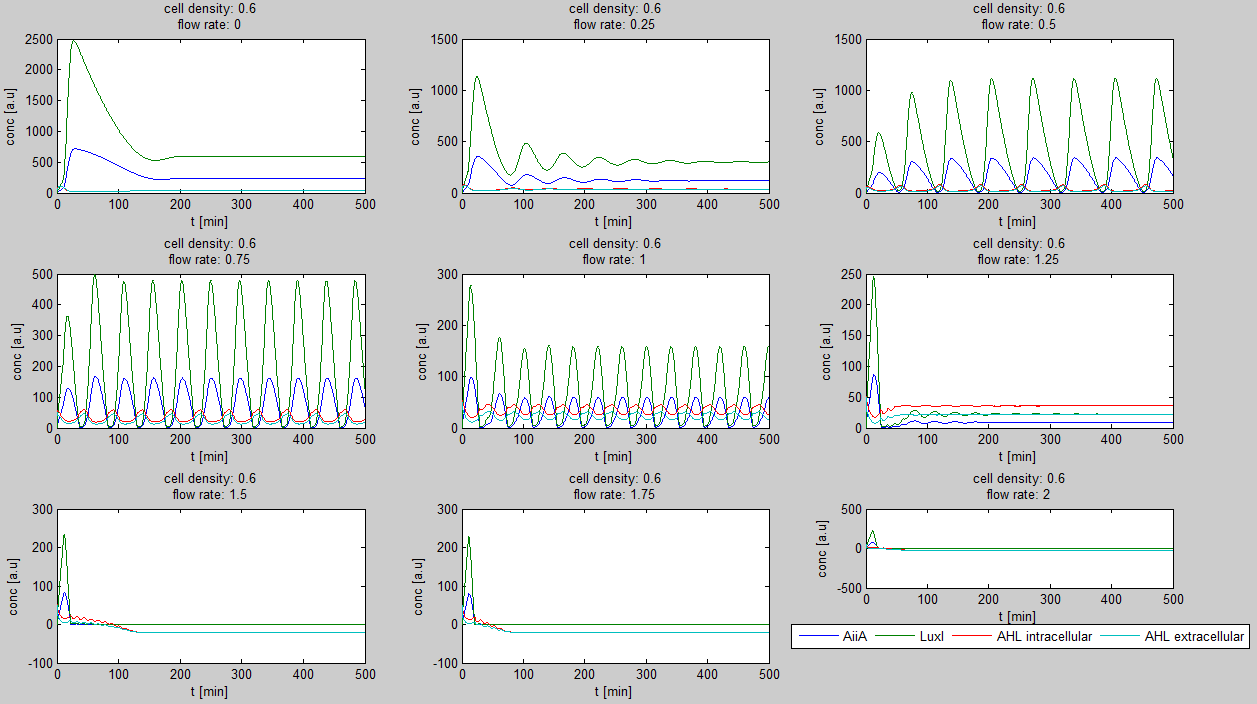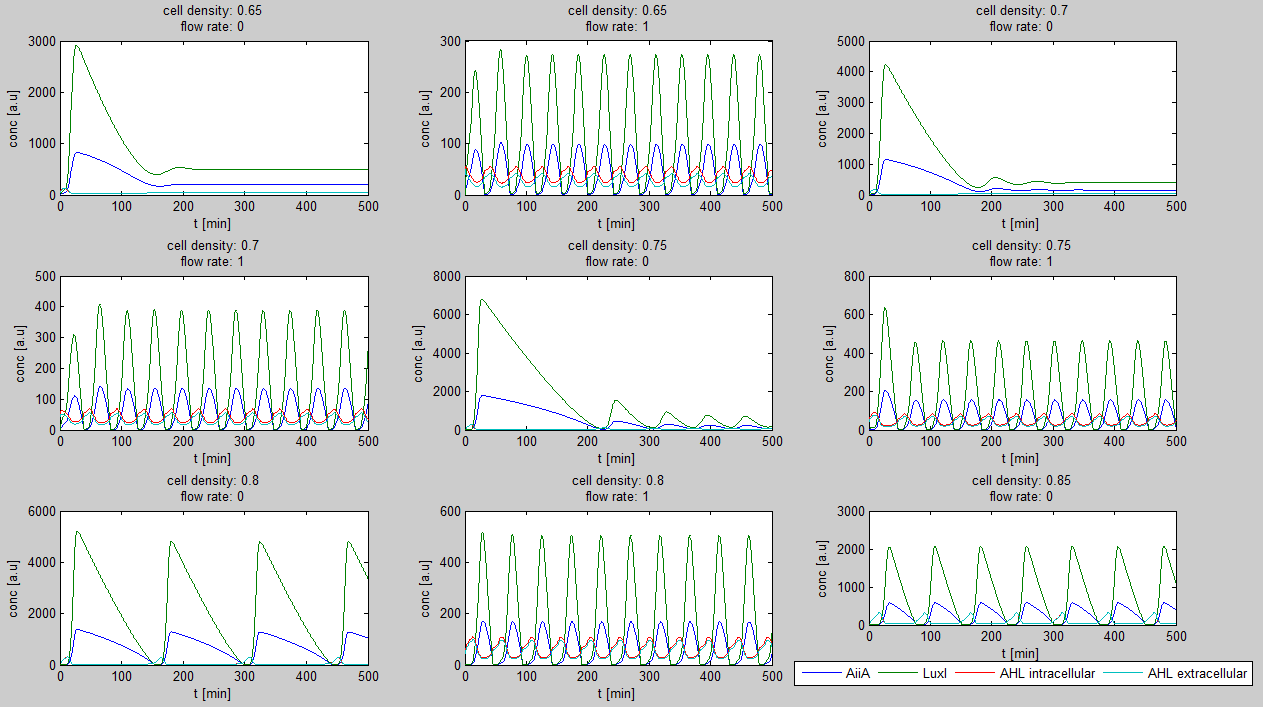Team:Wageningen UR/Project/ModelingProj1
From 2011.igem.org
(→Modeling synchronized oscillations) |
(→Modeling synchronized oscillations) |
||
| Line 87: | Line 87: | ||
| - | [[File:Example_output_graphs_WUR.png| | + | [[File:Example_output_graphs_WUR.png|770px|center]] |
'''Fig.2:''' ''Variation of output graphs depending on the different starting conditions'' | '''Fig.2:''' ''Variation of output graphs depending on the different starting conditions'' | ||
| Line 100: | Line 100: | ||
The first observation from the model was that, for oscillations to occur, the flow rates may not be too fast, especially at lower cell densities. Since the device used for our system has larger dimensions than the microfluidic device used by Danino et al. the flow rates in the velocities required could not be achieved by varying height differences alone. Further information can be found in the information about the [[Team:Wageningen_UR/Project/Devices#2._Setup| platform used to measure oscillations.]] | The first observation from the model was that, for oscillations to occur, the flow rates may not be too fast, especially at lower cell densities. Since the device used for our system has larger dimensions than the microfluidic device used by Danino et al. the flow rates in the velocities required could not be achieved by varying height differences alone. Further information can be found in the information about the [[Team:Wageningen_UR/Project/Devices#2._Setup| platform used to measure oscillations.]] | ||
| + | Furthermore an interesting observation was that applying a flow rate over the cells was not essential to obtain ocillations. Figure 3 shows how, according to the model, oscillations can potentially occur at 0 flow rate. Interesting is that this happens only at high cell densities. | ||
| + | |||
| + | [[File:Model0flow_WUR.png|770px|center]] | ||
| + | |||
| + | '''Fig.3:''' ''Graphs showing oscillatory behaviour even when the flow rate is set to 0'' | ||
Revision as of 22:54, 18 September 2011
 "
"








